Why ABA Therapy is Effective for Children with Social Skills Deficits
Unlocking Social Potential: The Impact of ABA Therapy on Children with Autism

Understanding ABA Therapy and Its Role in Autism
Applied Behavior Analysis (ABA) therapy stands as a cornerstone in the treatment of autism spectrum disorder (ASD), especially for children facing social skills deficits. This scientifically grounded approach leverages principles of learning and behavior to foster improvements in communication, social interactions, and adaptive behaviors. In this article, we explore why ABA therapy is effective for children with social skills challenges, drawing from empirical research and clinical practices that underline its transformative impact.
What is Applied Behavior Analysis (ABA) Therapy?
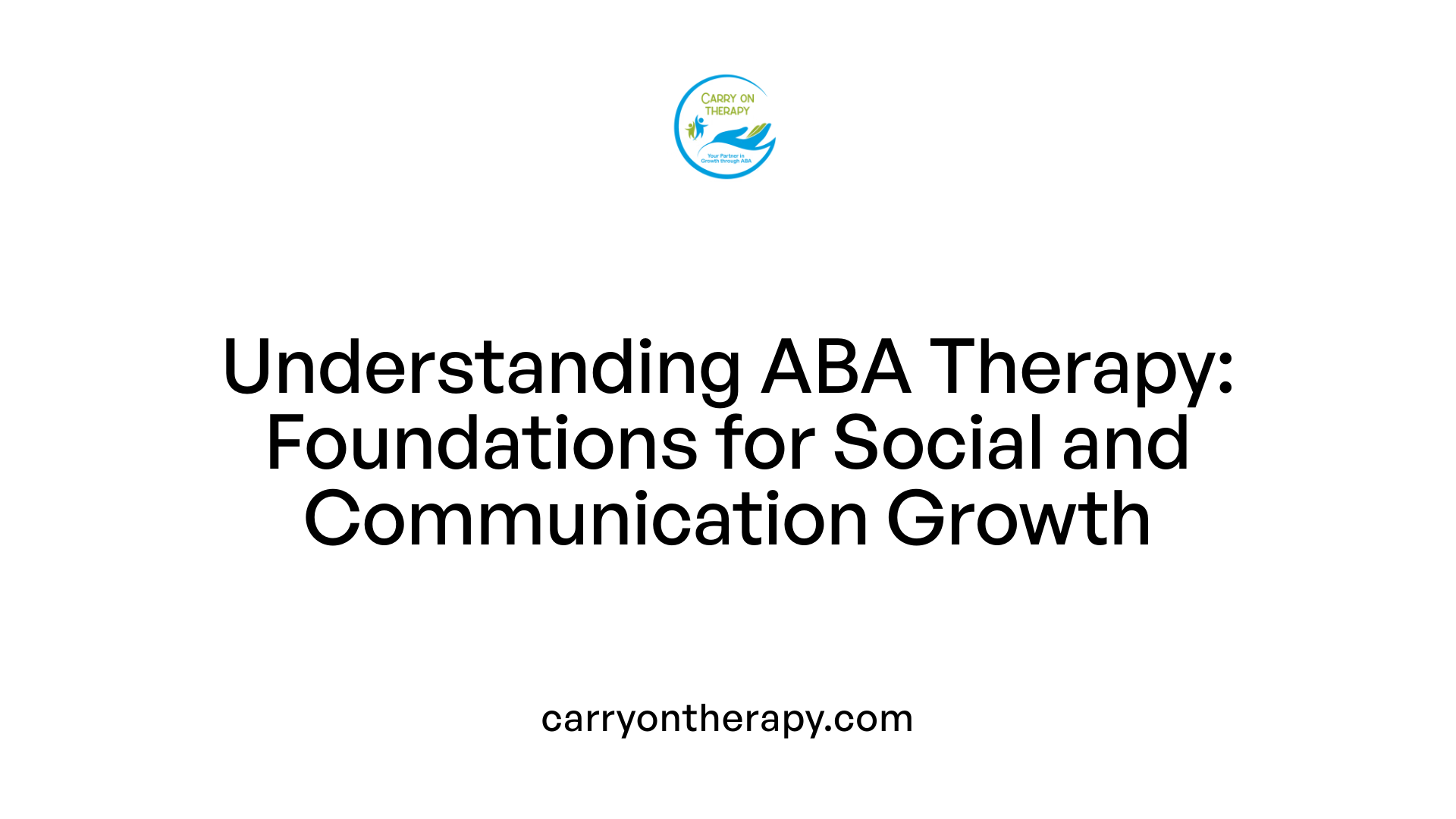
Definition of ABA therapy
Applied Behavior Analysis (ABA) therapy is a scientifically-based approach designed to help children with autism spectrum disorder (ASD) develop essential social, communicative, and daily living skills. It is grounded in principles of learning and behavior science, focusing on modifying behavior through systematic techniques.
Core principles of learning and behavioral science
Central to ABA therapy are concepts from operant conditioning, which uses reinforcement to encourage desired behaviors and reduce unwanted ones. By understanding how behavior is influenced by its consequences, ABA therapists strategically teach and shape skills.
Techniques used in ABA
ABA therapy employs techniques such as positive reinforcement to reward target behaviors and increase their occurrence. Discrete Trial Training (DTT) is another method involving structured teaching of skills in small, manageable steps. Other strategies include prompting, shaping, fading, modeling, and role-playing, which help children acquire and practice social skills.
Individualized nature of ABA programs
Each ABA program is highly individualized. Qualified Board Certified Behavior Analysts (BCBAs) assess a child’s specific needs and design tailored interventions. These interventions focus on particular social skill deficits or behavioral challenges unique to the child.
Settings where ABA is delivered
ABA interventions are versatile and delivered across a range of environments, including clinical settings, homes, and schools. Naturalistic teaching strategies embed skill instruction in everyday activities, facilitating more authentic learning and generalization.
Evolution towards naturalistic and play-based approaches
While traditional ABA often involved highly structured teaching, modern approaches have evolved to emphasize more naturalistic and play-based methods. These adaptations focus on making learning engaging and functional, helping children generalize skills to real-world social situations.
This combination of science-based methods, individualized programming, and flexible delivery makes ABA therapy a widely recognized and effective treatment for improving social and communication skills in children with autism.
How ABA Therapy Facilitates Social Skills Development in Children with Autism
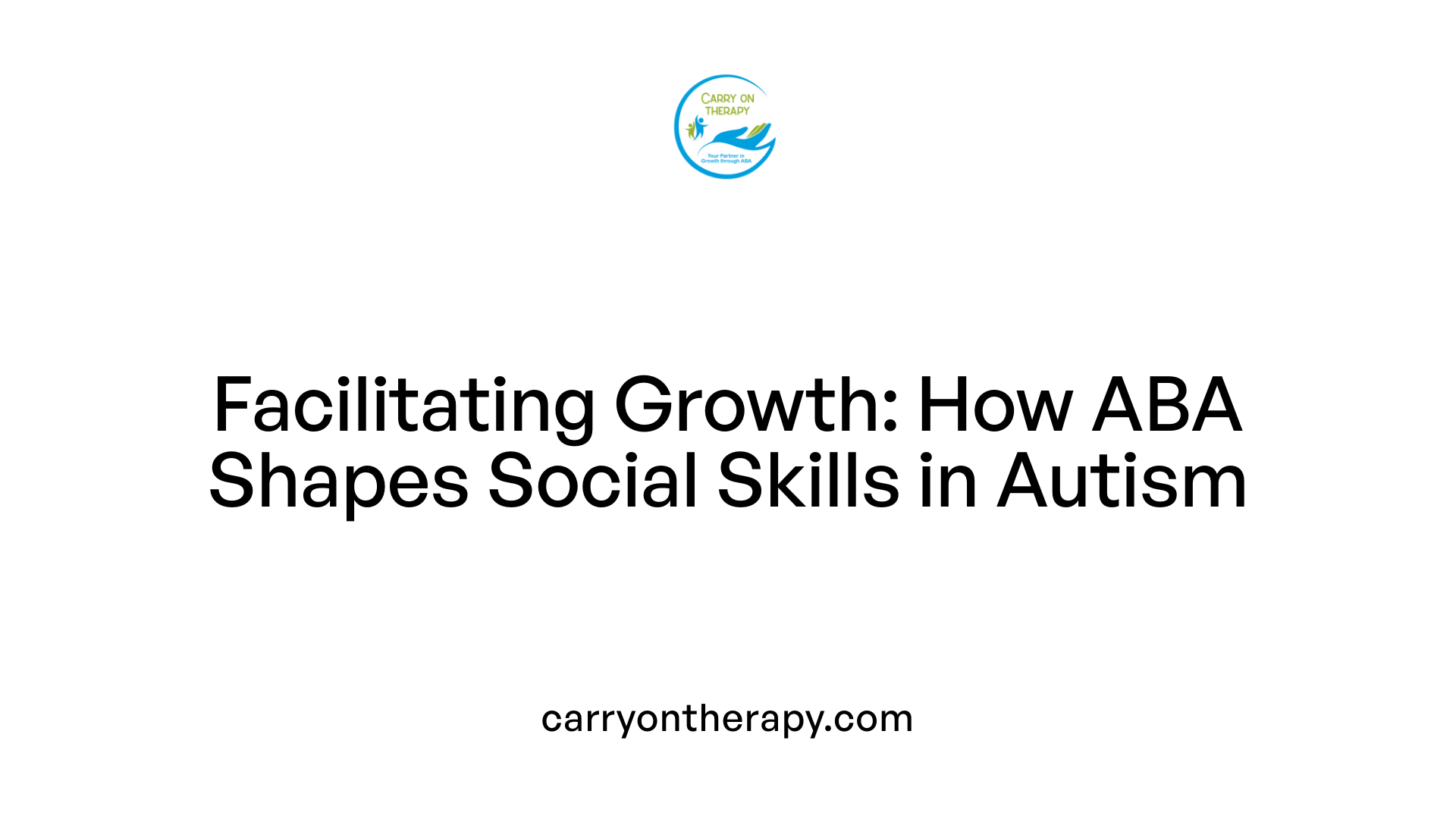
How does ABA therapy help individuals with autism?
ABA therapy aids children with autism by employing evidence-based methods to enhance communication, social interaction, and positive behaviors. The approach uses scientifically supported techniques such as positive reinforcement, prompting, and shaping to teach new skills while reducing interfering behaviors. Therapies are tailored individually, focusing on each child's specific social skill deficits and strengths.
Use of evidence-based strategies to teach social skills
ABA incorporates a variety of strategies including role-playing, social stories, video modeling, peer-mediated interventions, task analysis, and natural environment training. These methods break down complex social skills into smaller, manageable steps, making learning accessible to each child.
Focus on communication, social cues, turn-taking, sharing, friendships
The therapy targets key social skills by encouraging effective communication, understanding and responding to social cues, turn-taking, sharing, and developing friendships. These skills are critical for building relationships and participating in social settings.
Techniques like role-playing, social stories, video modeling, and peer-mediated interventions
Role-playing helps children practice real-life social scenarios. Social stories prepare children for social expectations, while video modeling visually demonstrates desired behaviors. Peer-mediated interventions involve interactions with peers to foster social engagement and skills.
Improvement of non-verbal communication such as eye contact and body language interpretation
ABA therapy also enhances non-verbal communication by teaching eye contact, facial expressions, and interpreting body language to improve overall social comprehension.
Teaching social skills in clinical and natural environments
ABA sessions are conducted both in structured clinical settings and natural environments, like home or school, to ensure skills generalize naturally.
Promoting generalization of skills across settings
Moving beyond therapy sessions, ABA encourages children to apply learned skills across various environments and social situations, promoting independence and real-world social participation.
In summary, ABA therapy is a comprehensive, individualized approach that develops essential social skills in children with autism. By combining structured techniques with natural teaching moments, ABA equips children to communicate effectively, understand social nuances, and build meaningful relationships.
Research Evidence Supporting ABA Effectiveness for Social Skills

What did the study involving 100 children with autism assess?
A notable study assessed 100 children aged 4 to 11 diagnosed with autism spectrum disorder (ASD). Out of these, 60 children participated in an Applied Behavior Analysis (ABA) intervention while 40 served as controls. This setup allowed researchers to compare the effects of ABA on social and communicative development effectively.
How was the ABA intervention structured?
The ABA program involved eight individual sessions, each lasting one hour, conducted twice per week. This structured, consistent approach aimed at providing ample opportunity for skill acquisition and practice.
What tools were used to measure outcomes?
Researchers utilized the Kindergarten Inventory of Social/Emotional Tendencies (KIST), a highly reliable and validated assessment tool (with an internal consistency α=0.81). Data were collected before and after the intervention to objectively measure changes in social, communicative, and adaptive behaviors.
What were the main findings of the study?
Results showed significant improvements in several areas among the ABA group compared to controls. These include enhanced social and communicative skills, improved adaptive behaviors, and a notable reduction in separation anxiety. The findings highlight ABA’s impact on both emotional and behavioral domains.
How was data analyzed for confirming effectiveness?
The study employed multivariate analysis of covariance (MANCOVA) to analyze differences between the ABA and control groups while controlling for potential confounding variables. This rigorous statistical method confirmed the effectiveness of ABA in boosting emotional and social development among children with ASD.
How does this study fit within the broader research context?
These findings align with a broad body of research supporting ABA as an evidence-based approach for improving behavioral outcomes in children with autism. It reinforces ABA’s role as a scientifically validated therapy for enhancing key social skills, contributing to better participation and emotional well-being.
This study adds compelling data demonstrating how targeted ABA interventions can foster social competence, reduce anxiety, and improve adaptive functioning in children with autism, thereby supporting its continued integration into treatment plans.
Core Techniques and Teaching Strategies in ABA for Social Skills

Positive Reinforcement, Prompting, Shaping, and Fading
ABA therapy applies learning principles such as positive reinforcement to encourage desired social behaviors. Prompting helps initiate responses, shaping gradually guides improvements in behavior, and fading systematically reduces prompts to promote independence.
Discrete Trial Teaching (DTT) and Naturalistic Teaching Methods
Discrete Trial Teaching breaks social skills into small, focused steps delivered in structured sessions. Naturalistic teaching embeds social skill learning in everyday activities, helping children generalize skills across settings.
Role-playing, Social Stories, Video Modeling
Role-playing allows children to practice social scenarios in a supportive environment. Social stories prepare children for social interactions by describing expected behaviors, while video modeling demonstrates appropriate social skills visually.
Task Analysis to Breakdown Complex Skills
Complex social skills are divided into manageable components through task analysis, enabling step-by-step teaching and success in mastering each part.
Peer-mediated Interventions and Social Skills Groups
Involving peers in interventions encourages natural social interactions. Social skills groups provide a setting for guided practice with peer feedback supporting skill development.
Use of Scripted Conversations and Natural Environment Training
Scripted conversations are used to teach structured dialogues, building communication confidence. Natural environment training focuses on teaching skills within real-life settings, ensuring children apply what they learn in everyday social contexts.
Individualized Assessment and Intervention Planning in ABA Therapy
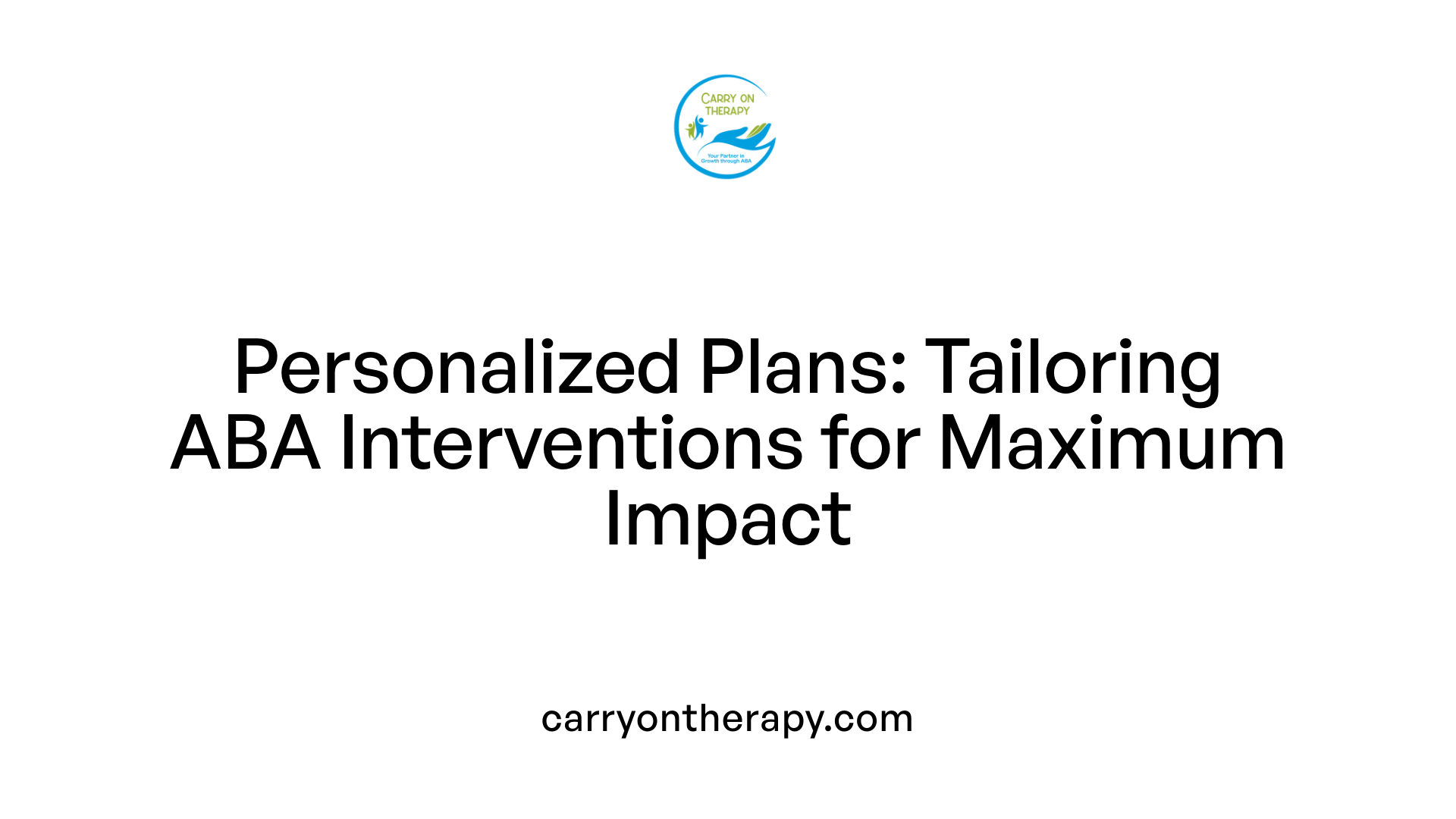
Importance of Individualized Assessment
ABA therapy starts with a detailed assessment to understand each child's unique social skill strengths and challenges. This individualized approach ensures that interventions target the specific needs of the child rather than applying a one-size-fits-all method.
Functional Behavior Assessments (FBA) to Identify Specific Social Skill Deficits
A key tool in assessment is the Functional Behavior Assessment (FBA). This process helps determine behaviors that interfere with social development and identifies their causes. By understanding why a child behaves a certain way, therapists can design strategies to improve social interactions effectively.
Personalized Intervention Plans Tailored to Each Child's Needs and Strengths
Based on the assessments, therapists develop personalized treatment plans. These plans break down complex social skills into smaller, manageable tasks and use techniques such as role-playing, prompting, reinforcement, and natural environment training to teach and generalize skills across different settings.
Collaborative Goal Setting Involving Therapists and Families
Goal setting in ABA therapy is collaborative. Therapists work closely with families to set realistic, meaningful social skills goals. Parental involvement is crucial as families support skill reinforcement at home, ensuring continuity and greater success.
Continuous Progress Monitoring Through Data Collection
Progress is continuously monitored using reliable tools and data collection methods. This allows therapists to adjust interventions quickly and ensure the child is advancing toward their social development goals.
Who Provides ABA Therapy and What Qualifications Do They Have?
ABA therapy is provided by qualified professionals like Board Certified Behavior Analysts (BCBAs). These experts hold graduate-level certifications and are trained to conduct thorough assessments and design individualized intervention plans. BCBAs supervise therapy delivery often carried out by Registered Behavior Technicians (RBTs) and other team members. They meet strict educational and ethical standards, ensuring evidence-based and effective treatment for children with autism spectrum disorder.
The Role of Parents and Caregivers in ABA Therapy for Social Skills
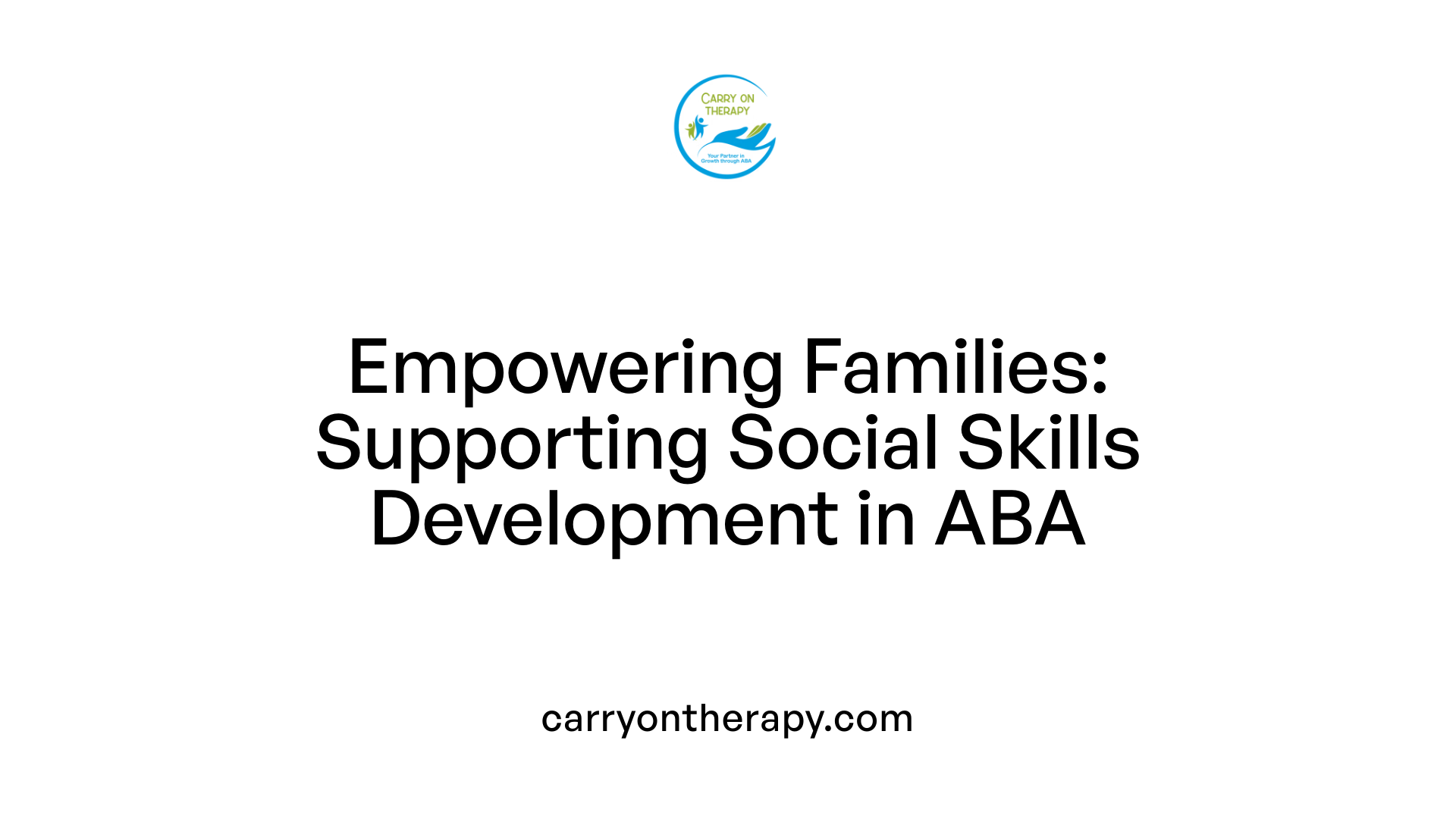
How Are Parents Involved in Reinforcing Skills at Home?
Parents and caregivers play a crucial role in ABA therapy by reinforcing the social and communicative skills their children learn during sessions. They are encouraged to practice and support these skills consistently at home, creating more opportunities for the child to generalize learned behaviors to everyday settings.
How Do Parents Collaborate in Setting Therapy Goals?
Therapists collaborate closely with families to set individualized and meaningful therapy goals. This teamwork ensures that intervention targets are tailored to the child's unique needs and family priorities, enhancing motivation and engagement.
How Are Parents Trained to Support Intervention Strategies?
Training sessions teach parents effective ABA techniques such as prompting, reinforcement, and modeling. By learning these strategies, parents become active participants in their child's therapy, enabling continuous support beyond clinical settings.
Why Is Consistency and Generalization Important?
Consistency between therapy sessions and the home environment is vital for skill acquisition and maintenance. Parents help ensure that social skills are practiced across different settings and situations, promoting the generalization of skills and long-term success.
What Are the Benefits of a Family-Centered Approach?
A family-centered approach enhances emotional bonding and empowers families to contribute directly to their child's development. This partnership leads to increased therapy effectiveness, greater parental confidence, and improved social outcomes for the child.
Generalization and Natural Environment Training: Extending ABA Gains

Why Is Generalization Important in ABA Therapy?
Generalization refers to the ability of children with autism to apply learned social skills in various settings and with different people outside the therapy room. This is essential because social interactions occur in multiple environments, such as home, school, and community. Without generalization, skills might only appear during structured therapy sessions, limiting real-world effectiveness.
What Is Natural Environment Training?
Natural Environment Training (NET) embeds social skill instruction within everyday activities. Instead of isolated drills, NET uses real-life situations to teach communication, turn-taking, and sharing. For example, a therapist might prompt a child to ask for a toy during playtime or to greet peers during snack time, making learning meaningful and relevant.
How Does Natural Environment Training Promote Independence?
By teaching skills in authentic contexts, children learn to navigate social situations independently. This approach helps children recognize social cues naturally and respond appropriately without constant prompts. Over time, supports are faded gradually, encouraging self-initiated social engagement.
What Strategies Support Generalization and Maintenance of Skills?
Using real-world practice opportunities is vital. Therapists and parents collaborate to provide consistent chances for children to use skills throughout their day. Task analysis breaks complex behaviors into smaller steps, while prompting and reinforcement support accuracy initially. As competence grows, these supports are reduced to maintain autonomy.
In sum, generalization and natural environment training ensure that the social skills gained through ABA therapy improve children's real-life social competence, fostering meaningful interactions and enhancing their quality of life.
Long-Term Benefits of ABA Therapy for Children with Social Deficits

How Does ABA Therapy Improve Social Competence and Participation?
ABA therapy uses structured techniques to teach social skills, such as turn-taking and sharing, by breaking them into manageable steps. This method helps children with autism improve their social competence, enabling them to actively participate in social activities and build meaningful relationships.
In What Ways Does ABA Enhance Self-Esteem and Emotional Well-Being?
By successfully learning and applying new social skills, children gain confidence, which bolsters their self-esteem. The reduction of separation anxiety through ABA also supports emotional stability, creating a foundation for healthier emotional well-being.
What Improvements Are Seen in Peer Interactions and Social Engagement?
Children undergoing ABA therapy often demonstrate increased social communication and better peer interactions. Techniques like role-playing and peer-mediated interventions promote engagement in group settings and improve understanding of social cues.
Can ABA Therapy Lead to Academic Gains and a Better Quality of Life?
Longitudinal research indicates that social skill gains from ABA contribute to enhanced academic performance and an overall improved quality of life. Social competence often correlates with better classroom participation and learning outcomes.
Why Is Early Intervention Important for Independence and Success in Adulthood?
Starting ABA therapy early lays a strong groundwork for independence by teaching essential social and daily living skills. Early acquisition of these skills improves the likelihood of successful social integration and better life outcomes as adults.
| Benefit Area | Description | Impact on Child's Life |
|---|---|---|
| Social Competence | Task analysis and reinforcement improve social abilities | Active participation and relationship building |
| Self-Esteem and Emotional Well-Being | Anxiety reduction and mastery of skills enhance confidence | Greater emotional stability and personal growth |
| Peer Interactions | Role-playing and peer interventions increase social communication | Improved friendships and social engagement |
| Academic and Quality of Life | Social gains support better learning and life satisfaction | Enhanced school performance and overall well-being |
| Early Intervention | Foundational skill development promotes long-term independence | Success in adulthood and autonomous living |
The Scientific Foundation Behind ABA Therapy

What Learning Theory Underpins ABA Therapy?
Applied Behavior Analysis (ABA) is firmly grounded in learning theory, particularly operant conditioning. This means that behaviors are shaped and maintained by their consequences. Therapists use these principles to encourage positive social behaviors and reduce challenging ones by reinforcing desirable actions.
How Is Reinforcement Used to Shape Behavior?
Reinforcement is central to ABA. Positive reinforcement—providing rewards or praise following a desired behavior—increases the likelihood that behavior will be repeated. Over time, shaping techniques help children develop complex social skills by reinforcing successive approximations towards the target behavior.
Is ABA an Ethical and Evidence-Based Approach?
ABA therapy adheres strictly to ethical guidelines and is a research-supported intervention. It involves individualized assessment and data-driven progress monitoring to ensure interventions are tailored and effective. The use of evidence-based strategies guarantees that therapy is not only supportive but also grounded in scientific rigor.
What Does Current Research Say About ABA’s Effectiveness?
Ongoing research consistently supports ABA’s efficacy in treating autism spectrum disorder. Studies demonstrate that ABA improves social communication, adaptive behaviors, and emotional well-being. These results confirm that ABA is a valid, effective method for fostering meaningful social skill development, with benefits that translate to better academic and life outcomes.
Measuring Progress and Outcomes in ABA Therapy for Social Skills
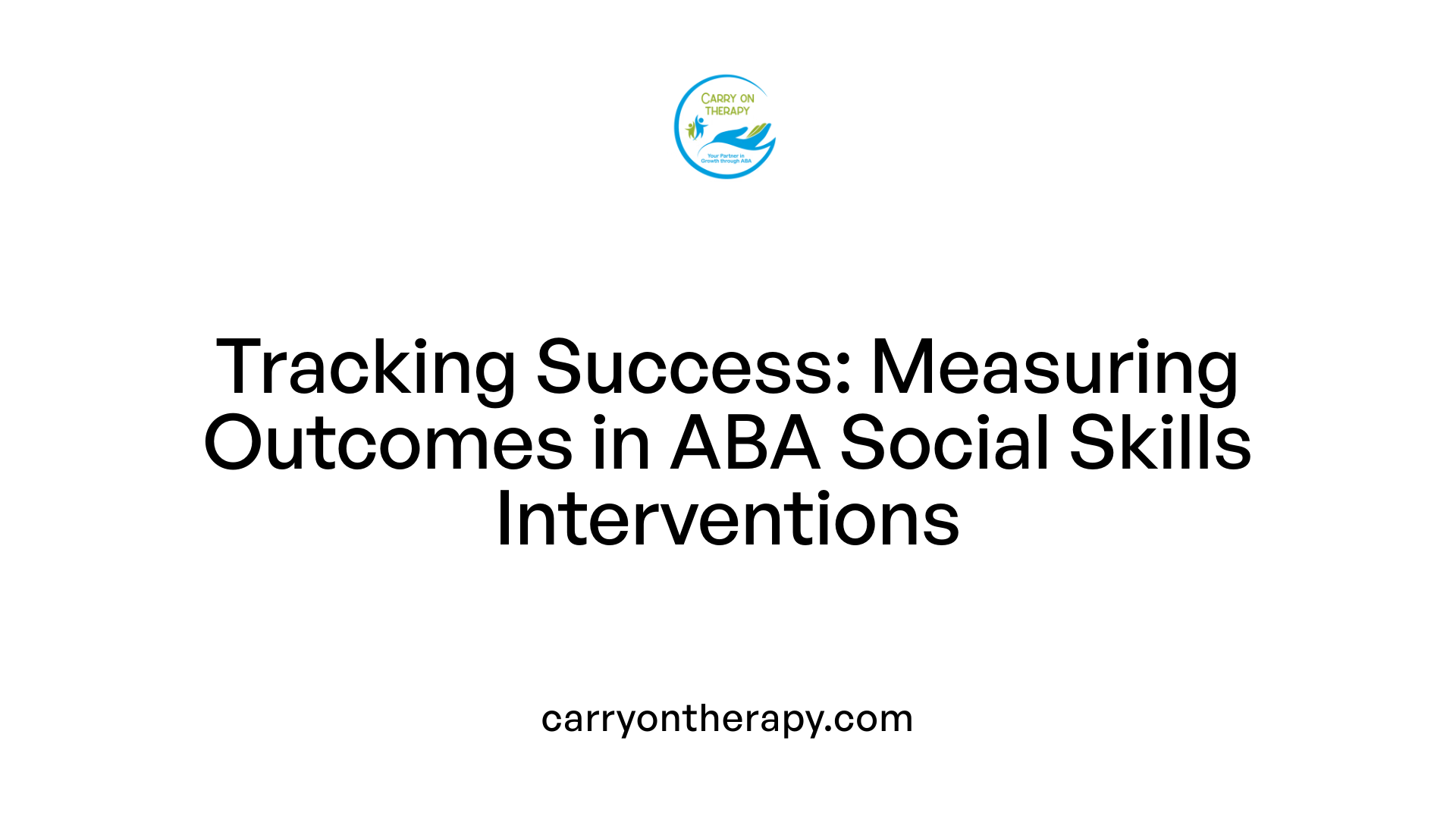
How are Data Collected in ABA Therapy?
Data collection in ABA therapy is a crucial step to monitor a child's progress in developing social skills. This process often involves gathering information before and after intervention sessions to evaluate changes over time. Parents and therapists work together to record specific behaviors and responses during therapy, ensuring that interventions are tailored to individual needs.
What Standardized Tools Are Used?
One validated tool frequently used in ABA research is the kindergarten inventory of social/emotional tendencies (KIST). This tool is designed to measure social and emotional behaviors in children and has a high internal consistency (α=0.81), making it reliable for assessing the effectiveness of social skills interventions.
How Is Research Data Analyzed?
To analyze data from studies involving ABA therapy, researchers often use advanced statistical methods such as multivariate analysis of covariance (MANCOVA). This technique allows for the control of variables and can confirm the effectiveness of ABA by comparing social and emotional development outcomes between intervention and control groups.
Why Is Continuous Monitoring Important?
Ongoing monitoring is essential in ABA therapy to adjust interventions as needed. Therapists regularly collect data during therapy sessions and review progress to refine strategies, ensuring that the child's specific social skill deficits are effectively addressed.
How Does Measuring Outcomes Demonstrate Effectiveness?
Measurable outcomes such as improvements in social communication, adaptive behaviors, and reductions in anxiety demonstrate ABA therapy's success. By using standardized assessments and rigorous statistical analysis, therapists provide clear evidence that ABA promotes meaningful gains in social skills, supporting better social competence and emotional well-being for children with autism.
The Transformative Power of ABA Therapy in Social Skills Development
ABA therapy represents one of the most effective evidence-based approaches for addressing social skills deficits in children with autism spectrum disorder. Its foundation in learning theory, combined with individualized assessment and tailored interventions, allows children to acquire and generalize crucial social and communicative abilities. Supported by extensive research and delivered by highly qualified professionals, ABA therapy not only improves social competence but also enhances emotional well-being and independence, setting the stage for greater quality of life and academic success. Engaging families in the therapeutic process further strengthens outcomes, making ABA a comprehensive, dynamic, and impactful treatment option for children facing social challenges associated with autism.
References
- The effectiveness of applied behavior analysis program ...
- How ABA Therapy Helps Improve Social Skills in Children
- Using ABA to Improve Social Skills in Children with Autism
- Fostering Meaningful Connections: Social Skills ...
- Who Qualifies for ABA Therapy: Eligibility Guide
- Applied Behavior Analysis (ABA)
- Board Certified Behavior Analysts (BCBA)
- Applied Behavior Analysis (ABA)







